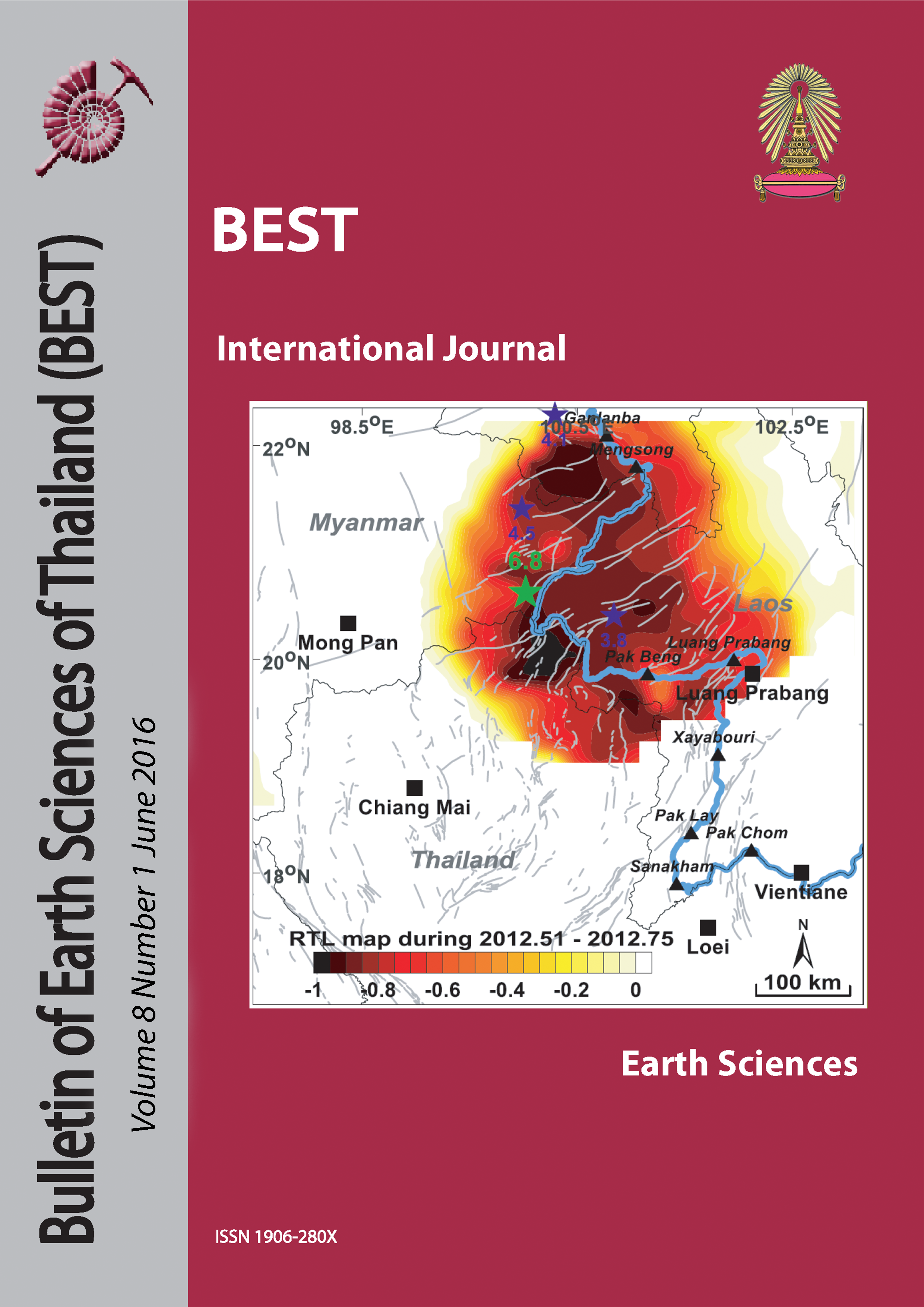Paleoearthquakes along Xaignabouli Fault Zone in Western Lao PDR
Main Article Content
Abstract
The Gulf of Thailand is situated at the western tip of South China Sea. The average depth of the gulf is about 45 m while the deepest part in the central channel is about 80 m. The water column is stratified into 2 layers with distinctive water masses. The purpose of this study is to evaluate the influence of wave on stratification of water in the gulf using the 3-D Princeton Ocean Model (POM). Water condition during January was simulated to represent the northeast monsoon condition and that during August for the southwest monsoon condition. Constant wave mixing strength (Bv) of 0.5 and 1.0 m2/s were added into the vertical mixing scheme. The model results indicated that while the presence of wave mixing increases water temperature in the upper layer but it doesn’t increase the depth of the upper layer.
Article Details

This work is licensed under a Creative Commons Attribution-NonCommercial-NoDerivatives 4.0 International License.
Copyright © 2008 Department of Geology, Faculty of Science, Chulalongkorn University. Parts of an article can be photocopied or reproduced without prior written permission from the author(s), but due acknowledgments should be stated or cited accordingly.
References
Aschariyaphotha, N., Wongwises, p., Wongwises, S., Humphries, U., You, X., 2008. Simulation of Seasonal Circulation and Thermohaline Variabilities in the Gulf of Thailand. Advance in Atmospheric Sciences 25(5): 489-506.
Blumberg, A. and Mellor, G.L., 1987. A Description of a Three-Dimensionsal Coastal Ocean Circulation Model. Three Dimensional Coastal Ocean Models.
Chaiongkarn, P. and Sojisuporn, P., 2013. Characteristics of Seasonal Wind and Wind-driven current in the Gulf of Thailand. BEST. Vol. 5, No.1, 58-67.
Mellor, G.L., 2004: Users Guide for a ThreeDimensional, Primitive Equation, Numerical Ocean Model. Princeton University, New Jersey, 56pp.
Qiao, F., Ma, J., Xia, C., Yang, Y., Yuan, Y., 2006. Influences of the Surface Waveinduced Mixing and Tidal Mixing on the Vertical Temperature Structure on the Yellow and East China Seas in Summer. Progress in Natural Science. 16(7): 739-746.
Qiao, F., Yuan, Y., Ezer, T., Xia, C., Yang, Y., Lu, X., Song, Z., 2010. A Threedimensional Surface Wave-ocean Circulation Coupled model and its initial testing. Ocean Dynaics 60:13391355.
Sojisuporn, P., Morimoto, A., and Yanagi, T., 2010.Seasonal variation of sea surface current in The Gulf of Thailand. Coastal Marine Science, 34, 1: 000000, 2010.
Stansfield, K., and C. Garrett, 1997. Implications of the Salt and Heat Budgets of the Gulf of Thailand. Journal of Marine Research. 55: 935963.
Wyrtki, K., 1961. Scientific Results of Marine Investigations of the South China Sea and the Gulf of Thailand 1959-1961. Naga Report 2, University of California at San Diego, 164-169.
Yanagi, T., Sachoemar, S., Takao, T., Fujiwara, S. 2001. Seasonal Variation of Stratification in the Gulf of Thailand. Journal of Oceanography. 57: 461-470.


